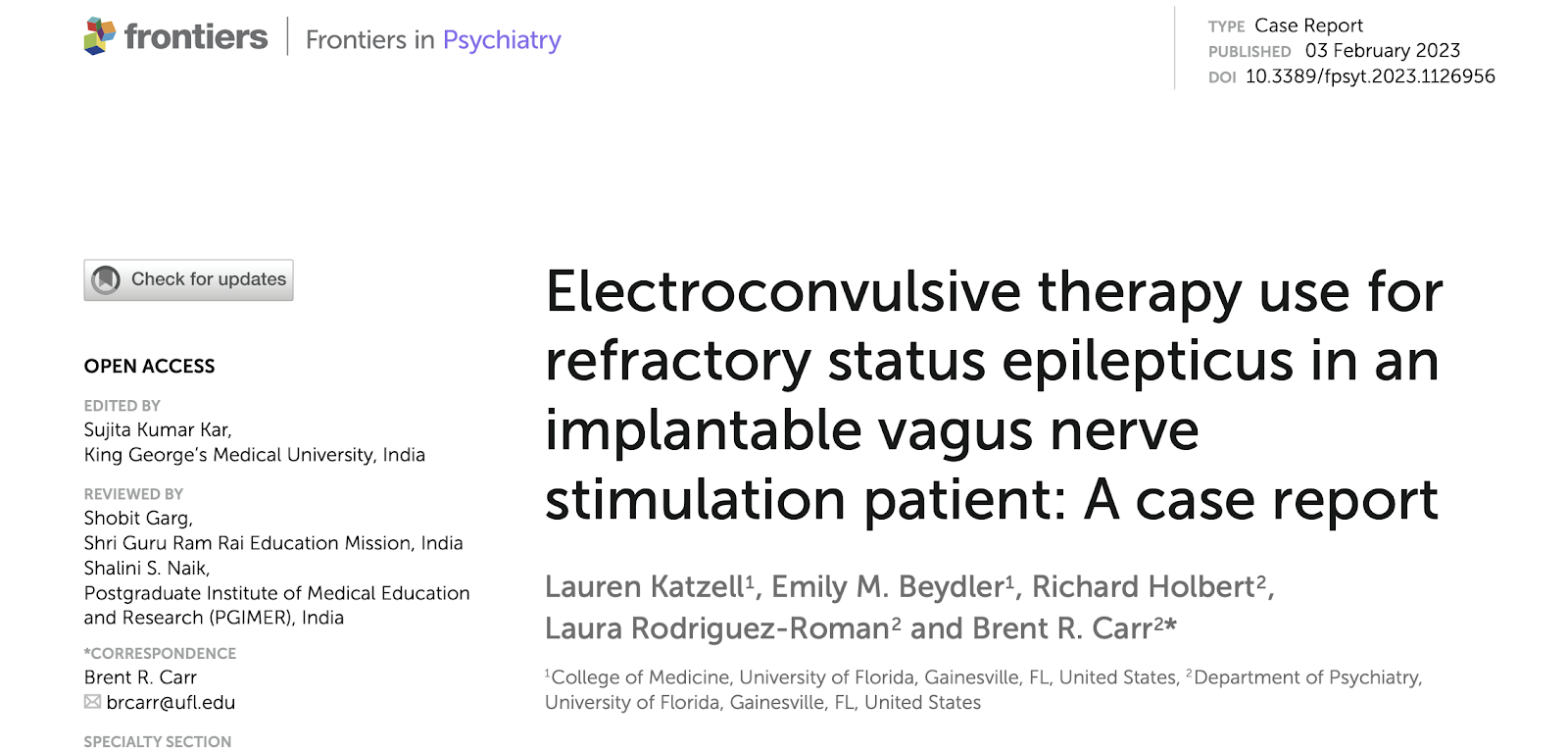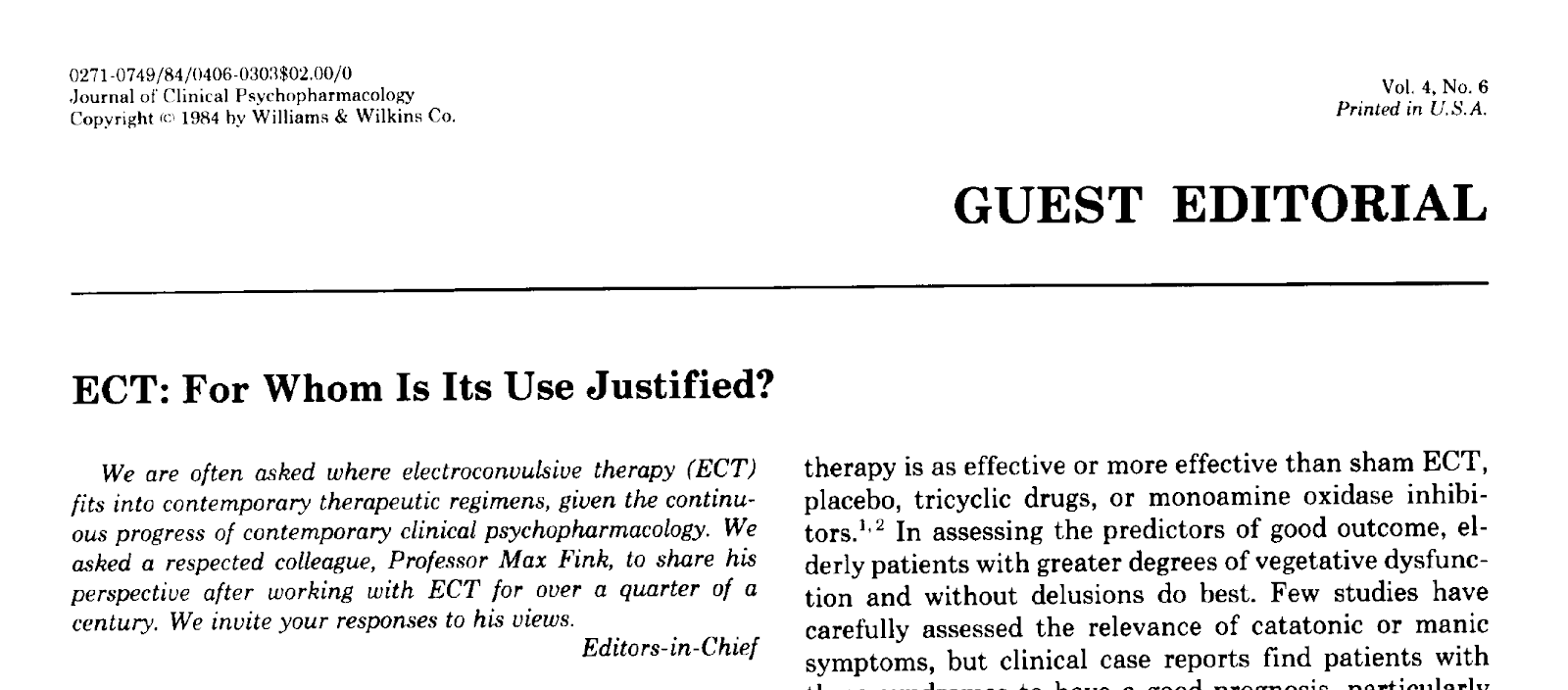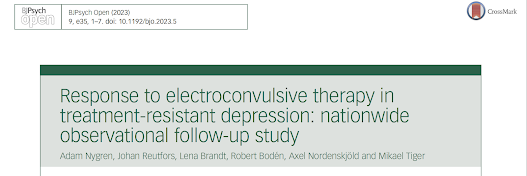Unsuccessful ECT For Refractory Status Epilepticus: Case Report From Florida

Out on PubMed, from clinicians in Florida, is this case report: Electroconvulsive therapy use for refractory status epilepticus in an implantable vagus nerve stimulation patient: A case report. Katzell L, Beydler EM, Holbert R, Rodriguez-Roman L, Carr BR. Front Psychiatry. 2023 Feb 3;14:1126956. doi: 10.3389/fpsyt.2023.1126956. eCollection 2023. PMID: 36816412 The abstract is copied below: Introduction: Status epilepticus (SE) has a mortality rate of 20 to 50%, with acute symptomatic SE having a higher risk compared to chronic SE. Electroconvulsive therapy (ECT) has been utilized for the treatment of refractory SE with a success rate estimate of 57.9%. There are no known reported cases of concomitant use of vagus nerve stimulation (VNS) and ECT for the treatment of super refractory SE (SRSE) available in the literature. Case description: We present a 44-year-old female with a history of developmental delay, epilepsy, an implantable VNS for 6 years, and traumatic brain injury with s










